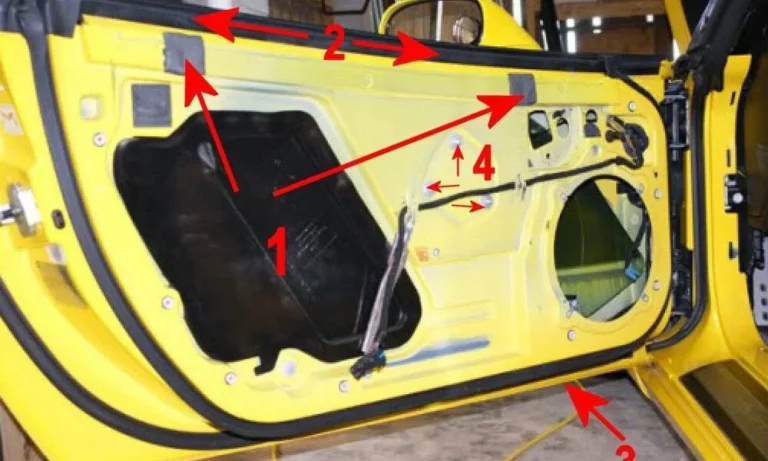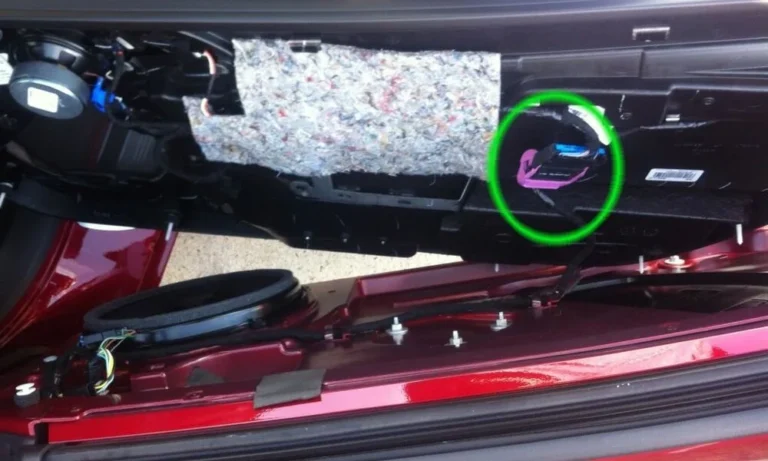How To Replace Car Window Regulator
How to replace a car window regulator is an important task for anyone facing issues with their windows. A functioning window regulator is vital for smooth window operation, ensuring safety, comfort, and convenience while driving. A malfunctioning regulator can cause windows to get stuck or move slowly, leaving you with a frustrating or unsafe situation.
Common signs of a broken window regulator include slow or stuck windows, or hearing strange grinding or clicking sounds. If you notice these issues, it may be time to replace a window regulator to restore proper function and prevent further damage.
How Your Vehicle's Power Windows Work

Power windows in vehicles allow you to raise and lower the windows with the push of a button, offering convenience compared to manual windows. The system consists of several components that work together to make this process possible.
Basic Components of Power Windows
- Window Motor: This is the motor that powers the movement of the window up and down. It’s usually located inside the door panel.
- Switch: This is the button you press to control the window. When you press the switch, it sends a signal to the motor to move the window.
- Window Regulator: The window regulator is an important part that physically moves the window up and down. It connects to the window and the motor, allowing the window to move smoothly within the door.
- Wiring and Relay: These parts connect the motor and the switch, providing electrical power to run the system.
How It Works
When you press the switch to open or close a window, it sends an electrical signal to the motor. The motor then turns, activating the window regulator. The regulator has a series of gears or a cable system that helps to lift or lower the window.
If the window is not moving properly, it could be due to a problem with any of these parts. One common issue is a malfunctioning window regulator. Over time, the regulator can wear out, causing the window to become stuck or move unevenly. In such cases, you may need to replace the window regulator to restore the proper function of the power window.
Types of Power Window Regulators
There are several types of power window regulators, each with its unique mechanism and uses. Here’s an overview of the most common types:
1. Cable-Driven Regulators
Cable-driven regulators use a system of cables, pulleys, and a motor to move the window up and down. The motor turns the cables, which in turn lift or lower the window.
How They Function:
- When the motor runs, it pulls on the cables, causing the window to rise or fall.
- The cables are typically connected to a set of pulleys that help guide the movement of the window.
Common Applications:
- Cable-driven regulators are often found in vehicles with compact or complex door designs where space inside the door is limited. They are also commonly used in more modern cars due to their compact size and reliability.
2. Scissor-Style Regulators
Scissor-style regulators use a series of interconnected arms that operate in a scissor-like motion to move the window. These arms are connected to the window and are driven by the motor.
How They Function:
- The motor moves the arms, which “scissor” to lift or lower the window. As the motor turns, the arms fold or unfold, causing the window to move.
- This design creates a smooth, even movement as the window is raised or lowered.
Typical Applications:
- Scissor-style regulators are often found in older vehicles or those with larger window openings. They are commonly used in vehicles where the space inside the door allows for the larger, more mechanical design of the scissor arms.
3. Dual-Arm Regulators
Dual-arm regulators have two arms that work together to move the window. These arms are typically arranged in parallel and are driven by a motor to raise or lower the window smoothly.
How They Function:
- The motor turns a mechanism that moves the two arms in parallel, causing the window to rise or fall. This design helps distribute the load of the window evenly across both arms.
Benefits:
- The dual-arm design helps with better weight distribution and can handle heavier windows more efficiently. This makes them ideal for larger windows or heavier glass.
- They are also generally known for providing smoother and quieter operation compared to other types of regulators.
4. Comparison of Types: Which Regulator is Suitable for Different Vehicle Models
- Cable-Driven Regulators: These are typically used in newer vehicles and are great for vehicles with limited space in the door. They are compact, reliable, and easier to install in modern designs.
- Scissor-Style Regulators: Often found in older vehicles or those with larger windows. They are good for applications where the window needs to move over a longer range, and there is enough room for the scissor mechanism.
- Dual-Arm Regulators: Best suited for larger, heavier windows found in vehicles like SUVs, trucks, or luxury cars. They provide smooth operation and are often used in vehicles where durability and weight capacity are important factors. For car window repair in Austin contact no other than Texas Reliable Auto Glass.
5 Easy Steps to Replace a Car Window Regulator

If you’re experiencing issues with your power window, fixing a window regulator might be necessary. Here’s a simple guide to help you replace a faulty window regulator.
Step 1: Gather Necessary Tools and Materials
Before you start replacing the window regulator, make sure you have all the necessary tools. You’ll need:
- Screwdrivers (Phillips and flathead)
- Socket set (with various sizes)
- Replacement window regulator
- Trim panel removal tool (to remove the door panel without damaging it)
- Needle nose pliers (for handling clips or small fasteners)
- Torx drivers (in case your vehicle uses them)
Having all these tools ready will make the process smoother and faster.
Step 2: Remove the Door Panel
The first step to accessing the window regulator is removing the door panel. Here’s how:
- Locate and remove screws: Start by finding any screws on the door panel. These may be near the door handle or along the edges of the panel.
- Remove clips and fasteners: Some clips or fasteners may be holding the panel in place. Use a trim panel removal tool to gently pry off the panel without damaging the clips. Be careful as you work around the panel to avoid breaking the clips or scratching the surface.
- Lift the door panel: Once all fasteners are removed, gently lift the door panel off. Keep an eye out for any wires or cables (for things like power locks or window switches) that might still be connected.
Tip: If the door panel doesn’t come off easily, double-check for any screws or fasteners you may have missed.
Step 3: Disconnect the Power Window Motor
Before removing the broken window regulator, you need to disconnect the power window motor.
- Locate the motor: The window motor is usually attached to the regulator assembly. It will have an electrical connector.
- Disconnect the wiring: Carefully disconnect the power window motor wiring. You may need to press a tab or release a clip to unplug the connector.
- Remove any bolts: There might be bolts securing the motor to the door frame. Use a socket wrench to remove them.
Important: Be careful not to damage any wiring or connectors when disconnecting the motor.
Step 4: Remove the Broken Window Regulator
Now it’s time to remove the faulty window regulator.
- Loosen bolts securing the regulator: Look for bolts or screws holding the window regulator to the door frame. Use your socket set to remove these fasteners.
- Remove the regulator from the door: Once all bolts are removed, gently pull the window regulator out of place. Be sure to support the window if it’s loose, as it might fall out of the door.
- Dealing with stuck or jammed parts: If the regulator is stuck or jammed, carefully wiggle the assembly to loosen it. Sometimes, you might need to release some clips or remove additional screws that weren’t visible at first.
Step 5: Install the New Window Regulator
Now that the old regulator is out, it’s time to install the new one.
- Position the new regulator: Place the new window regulator in the door, aligning it with the mounting points where the old one was secured.
- Bolt the new regulator in place: Use your socket wrench to fasten the regulator to the door frame. Make sure it is securely attached and aligned properly.
- Reconnect the power window motor: Attach the power window motor to the regulator and reconnect the wiring. Ensure everything is connected properly before continuing.
- Test the window: Before reassembling the door panel, test the window by reconnecting the switch and running the motor to ensure the window moves up and down smoothly.
Broken Window Regulator Quick Fix
A broken window regulator can be frustrating, especially if you’re stuck with a window that won’t go up or down. While fixing a window regulator properly requires replacement, there are temporary solutions to manage the issue until you can get it fully repaired.
Temporary Solutions for a Broken Window Regulator
If your window regulator fails and you can’t get the window to move, here are a few quick fixes to help you manage the situation:
- Use Duct Tape or Painter’s Tape to Secure the Window:
- If the window has fallen down and won’t stay in place, you can use strong tape to temporarily hold it up. Tape along the edges of the window to the frame of the door. This will keep the window from sliding down until you can replace the regulator.
- Be careful not to block the window with excessive tape, as this might make it difficult to replace the regulator later.
- If the window has fallen down and won’t stay in place, you can use strong tape to temporarily hold it up. Tape along the edges of the window to the frame of the door. This will keep the window from sliding down until you can replace the regulator.
- Manually Raise or Lower the Window:
- If the motor still works but the regulator is broken, you may be able to manually lift or lower the window. Here’s how:
- Remove the door panel: To access the window mechanism, you’ll first need to remove the door panel. Use a trim tool to gently pry it off without damaging the clips.
- Locate the window regulator: Once the panel is off, you may be able to see the broken regulator. Depending on the damage, you can attempt to manually push or pull the window into the desired position.
- Secure the window: If you manage to get the window up, make sure to tape it or secure it with a piece of rope or string tied to the door frame to keep it in place.
- Remove the door panel: To access the window mechanism, you’ll first need to remove the door panel. Use a trim tool to gently pry it off without damaging the clips.
- If the motor still works but the regulator is broken, you may be able to manually lift or lower the window. Here’s how:
- Use a Temporary Locking Mechanism:
- If your window falls and you need to keep it closed for safety, you can temporarily lock it in place with a piece of wood or a small rod. Place the rod or wood against the bottom of the window to prevent it from dropping further. Ensure it’s positioned in a way that it won’t interfere with your ability to remove the door panel later.
- If your window falls and you need to keep it closed for safety, you can temporarily lock it in place with a piece of wood or a small rod. Place the rod or wood against the bottom of the window to prevent it from dropping further. Ensure it’s positioned in a way that it won’t interfere with your ability to remove the door panel later.
When to Seek Professional Help
While these quick fixes can help you manage the issue temporarily, fixing a window regulator requires replacing the broken parts for a permanent solution. Here are some signs that it’s time to seek professional help:
- Severe damage to the regulator: If the regulator is severely damaged and can’t be manually adjusted, it’s better to get it replaced sooner rather than later.
- The motor is also malfunctioning: If both the regulator and the motor are broken, it will be difficult to fix the window on your own, and a professional mechanic will need to replace both components.
- Inability to secure the window: If you’re unable to manually raise or lower the window or secure it in place, a professional can quickly fix the issue and ensure your window works properly.
- Persistent issues: If you’re experiencing ongoing window issues, it might be a sign of a bigger problem, and a mechanic can assess the situation and perform the necessary repairs.
Final Thoughts
Replacing a car window regulator can be a straightforward process if you’re comfortable with basic car repairs. By following the steps outlined earlier, you can remove the old regulator, install a new one, and get your window working again. However, if you’re unsure or would prefer professional assistance, Texas Reliable Auto Glass is here to help.
If you need any professional services or assistance related to fixing a window regulator, don’t hesitate to contact us. Our team of experts in Austin is ready to provide fast, reliable service to get your vehicle back in top shape.
Contact Texas Reliable Auto Glass:
- Phone: +1 737-346-1350
- Service Area: Austin, TX
Let us take care of your auto glass and window regulator needs, so you don’t have to worry about a thing!
FAQs
What Is A Car Window Regulator?
A car window regulator is a mechanical component that helps move the window up and down. It is usually powered by an electric motor and is responsible for guiding and supporting the window as it moves within the door.
Why Do I Need To Replace My Car Window Regulator?
You may need to replace your car window regulator if your window is stuck in one position (up or down), moves unevenly, or makes strange noises. These are signs of a malfunctioning regulator that may need replacement to restore proper window function.
How Do I Know If My Window Regulator Is Broken?
Common signs of a broken window regulator include the window not moving up or down, the window moving slowly or jerking when raised or lowered, unusual noises coming from the door when operating the window, or the window being stuck in one position and unable to be adjusted.
Can I Replace The Window Regulator Myself?
Yes, replacing a window regulator is possible for someone with basic car repair knowledge. It involves removing the door panel, disconnecting the motor, and replacing the broken regulator with a new one. However, if you’re unsure or uncomfortable with the process, it’s best to seek professional help.
What Tools Do I Need To Replace A Car Window Regulator?
To replace the car window regulator, you will need screwdrivers (Phillips and flathead), a socket set, a replacement window regulator, a trim panel removal tool, and needle nose pliers to handle clips or small fasteners.

